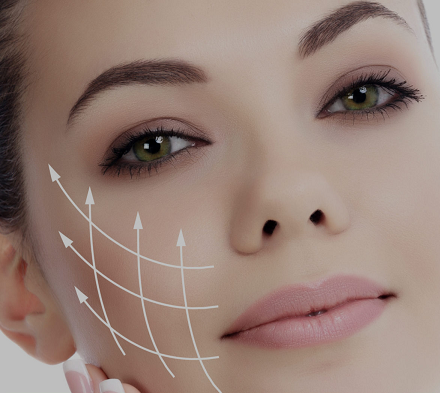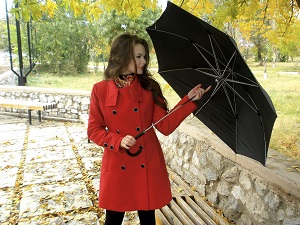
Select your language

Select your language


In recent years, advancements in skincare technology have revolutionized the way we approach skin rejuvenation and anti-aging treatments. One such breakthrough is Phi-Ion, a cutting-edge technique that offers remarkable improvements in skin texture and appearance. In this article, we delve into what Phi-Ion is and how it can enhance your skin.
Phi-Ion technology, also known as plasma fibroblast therapy, harnesses the power of plasma to rejuvenate and tighten the skin. Plasma is the fourth state of matter, consisting of charged particles that are generated when gases are ionized. In Phi-Ion therapy, a small handheld device is used to deliver controlled pulses of plasma energy to targeted areas of the skin.
The Phi-Ion device creates a tiny plasma arc that superficially damages the skin's epidermal layer. This controlled trauma stimulates the body's natural healing response, triggering the production of collagen and elastin fibers. Collagen and elastin are essential proteins that provide structure and elasticity to the skin, leading to improved firmness and texture.
Skin Tightening: Phi-Ion therapy is highly effective in tightening loose or sagging skin, particularly in areas such as the eyelids, neck, and jawline. By stimulating collagen production, it helps to restore firmness and reduce the appearance of wrinkles and fine lines.
Wrinkle Reduction: The collagen-boosting effects of Phi-Ion therapy can significantly diminish the appearance of wrinkles and creases, resulting in smoother, more youthful-looking skin.
Scar Revision: Phi-Ion technology can also be used to improve the appearance of scars, including acne scars and surgical scars. By promoting collagen remodeling, it helps to soften and blend the edges of scars, leading to a more even skin texture.
Non-Invasive: Unlike traditional surgical procedures such as facelifts, Phi-Ion therapy is minimally invasive and requires little to no downtime. Patients can typically resume their normal activities immediately after treatment, making it a convenient option for busy individuals.
Long-lasting Results: While the initial results of Phi-Ion treatment may be visible shortly after the procedure, the full benefits become more apparent over time as collagen continues to rebuild. With proper skincare maintenance, the results can last for several years.
Phi-Ion therapy is suitable for individuals looking to address various skin concerns, including aging skin, laxity, wrinkles, and scarring. It is a versatile treatment that can be customized to meet the unique needs and goals of each patient. However, it may not be suitable for individuals with certain medical conditions or skin types, so a consultation with a qualified practitioner is essential to determine candidacy.
Phi-Ion technology represents a significant advancement in the field of skin rejuvenation, offering a safe, effective, and non-invasive solution for improving skin texture and appearance. Whether you're looking to tighten sagging skin, reduce wrinkles, or minimize the appearance of scars, Phi-Ion therapy can help you achieve smoother, more youthful-looking skin with minimal downtime. Consider consulting with a skincare specialist to learn more about how Phi-Ion treatment can benefit you.
Discovering a tiny skin tag -- or several skin tags -- on the neck or under the arm can be alarming. But there's no reason to worry, skin tags are harmless. They're not cancerous and they don't increase the risk of any kind of cancer. Skin tags are usually oval flaps of tissue that hang from the skin on a tiny stalk. They may appear alone or in a group. Typically, they're the size of a grain of rice, but they can be smaller or larger. Rarely, they can get as big as a grape. They're common and almost half of all people have a skin tag at some point in their lives. They commonly occur increases on folds of the skin.
Medical terms may use to describe a skin tag include fibroepithelial polyp, acrochordon, cutaneous papilloma, and soft fibroma. All of these terms describe skin tags and are benign (noncancerous), painless skin growths
The precise cause of skin tags is unknown
Skin allergy symptoms like redness, itching, and swelling often go away on their own in a week or two, with or without treatment. You can do some things to make it more comfortable in the meantime.
Avoid contact. It might sound obvious, but it’s worth a reminder.
You can’t use or touch what triggers your allergy.
Shower can help calm a fiery rash.
Wash the area with cold or regular water (never hot water) one to two times per day, gently pat dry with a paper towel and then moisturize with Liquid Vitamin E or vitamin A and D.
Use Vitamin E (Vitamin A and D) to protect your skin in the morning and night for 1 month.
Wear cotton clothes for 1 month like a long-sleeve T-shirt or long underwear depending on the place where the removal of skin tags was done.
Avoid rubbing the skin with skin this can irritate the area treated.
Avoid High temperatures.
Take one tablet of Allegra Allergy Relief the same day before (or immediately after) during 1 week.
Allegra Allergy Relief contains the active ingredient fexofenadine. Allegra is non-sedating, so it should not make a person feel drowsy. Allegra is also a second-generation antihistamine and helps you with relief your skin. There are two options: -Allegra 60 mg tablets with water every 12 hours; do not take more than 2 (two) tablets in 24 hours or - Allegra 180 mg tablets with water every 24 hours; do not take more than 1(one) tablet in 24 hours.
Warnings Allegra Do not use if you have ever had an allergic reaction to this product or any of its ingredients. Ask a doctor before use if you have kidney disease. Your doctor should determine if you need a different dose.
754-234-9754 Monday to Sunday 8 am to 8 pm

WHAT IS PRP?
PRP, or platelet rich plasma is a revolutionary treatment for Skin rejuvenation. In a PRP treatment the patient’s own blood is processed resulting in a high concentration of platelets. Platelets are specialized type of blood cells.
HOW DOES PRP WORK?



 Chemical peels can soften the appearance of fine lines and wrinkles. Chemical peels help rejuvenate the skin via a chemical solution that sloughs off the damaged, outermost layer of the skin, which allows smoother, more evenly pigmented skin to surface, notes the American Academy of Dermatology. The mildest type of chemical peels generally contain alpha hydroxy acids, or AHAs. A medium-depth peel consists of trichloroacetic acid, or TCA, while a deep peel uses the strongest chemical solution, known as phenol. Aftercare will vary depending on the strength of your chemical peel.
Chemical peels can soften the appearance of fine lines and wrinkles. Chemical peels help rejuvenate the skin via a chemical solution that sloughs off the damaged, outermost layer of the skin, which allows smoother, more evenly pigmented skin to surface, notes the American Academy of Dermatology. The mildest type of chemical peels generally contain alpha hydroxy acids, or AHAs. A medium-depth peel consists of trichloroacetic acid, or TCA, while a deep peel uses the strongest chemical solution, known as phenol. Aftercare will vary depending on the strength of your chemical peel.